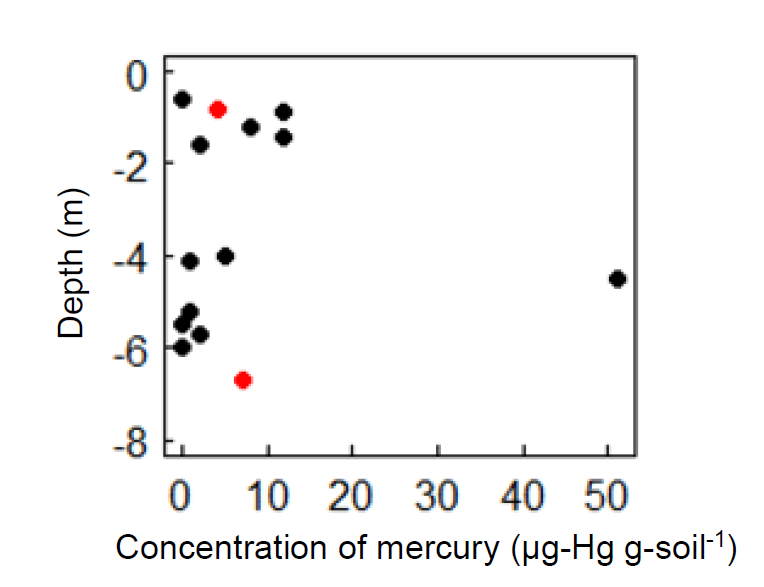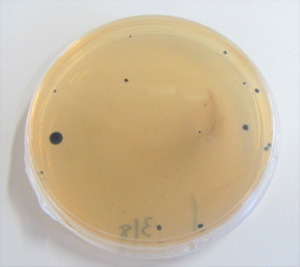- Waste management in Japan
- Circular economy in Japan
- Waste management in Asia
- Disaster waste management
Microbial Methylation of Mercury: Toward Safe Management of Mercury Waste in Final Disposal Sites in Japan
English translation: April 2023
Introduction
Reactions of microorganisms are indispensable for stabilization of waste disposal sites as they decompose organic matter. However, it is well known that they emit greenhouse gases such as carbon dioxide (CO2) and methane (CH4) as well as toxic gases such as hydrogen sulfide (H2S) during the decomposition process. In addition to the decomposition of organic matter, microbial reactions are also closely related to the changes in chemical forms of metals. This article will introduce one of our research team’s activities on these metals: an initiative to develop appropriate methods for mercury waste management in final disposal sites considering the relations between microbial reactions and mercury.
The Minamata Convention on Mercury1, 2 came into effect in August 2017 to limit the use of mercury, which has increased the need in the medium to long term for the treatment and management of waste containing mercury. As the amount of such mercury waste in final disposal sites is expected to increase, establishing their safe and appropriate management methods has become imperative.
Methylation of Mercury
Mercury is known to transform in the environment, and methylmercury shows high toxicity to living organisms including humans, in particular. In order to establish safe and appropriate methods for mercury waste management, it is important to understand not only the emissions and mobility of mercury in final disposal sites, but also the fact that its toxicity is increased by methylation. In natural environment, some bacteria (e.g., sulfate-reducing bacteria, iron-reducing bacteria, methanogenic bacteria) have been reported to convert inorganic mercury to methylmercury3. It has been verified that sulfate-reducing and iron-reducing bacteria methylate mercury in larger amounts and more rapidly than methanogenic bacteria, and they are thus thought to be main contributors to methylation of mercury in natural environment. In recent years, hgcAB genes have been reported as genes to encode the protein that catalyzes methylation of mercury4. Two kinds of proteins (i.e., enzymes), HgcA and HgcB, are indicated to be related to methylation of mercury. HgcA transfers methyl groups to mercury and becomes oxidized during the methylation. HgcB serves as an electron donor to reduce the oxidized HgcA back to HgcA.
Mercury methylation potential survey targeting hgcAB genes
Scientific knowledge on methylation of mercury in natural environment has been accumulated, but the actual state in waste disposal sites has not yet been clarified. Our research team has been conducting a survey on methylation potential of mercury targeting hgcAB genes at an actual final disposal site in Japan. So far (at the time of this writing), hgcAB genes have not been detected in most of the samples from the site but have been found in some samples irrespective of their depths and mercury concentrations (Fig. 1). It was assumed that factors other than mercury concentrations influence the amount of hgcAB genes. We have also found that 25% of the sulfate-reducing bacteria that were isolated from the final disposal site (Fig. 2) contained hgcAB genes. This result implies that the sulfate-reducing bacteria containing hgcAB genes can survive in final disposal sites. Controlling the reactions of these bacteria is therefore important to reduce the risk of mercury methylation in final disposal sites. Certain measures are effective in the sites for suppressing the reactions of sulfate-reducing bacteria as they are obligately anaerobic and heterotrophic bacteria in general: avoiding the mixing of mercury waste with organic matter (i.e., substances required for the reaction of sulfate-reducing bacteria); placing mercury waste at the spots without drainage problems in these sites to prevent an anaerobic state (e.g., avoiding the spots around intermediate cover soil and drainage pipes); and ensuring that the spots in the disposal site where mercury waste is landfilled are not affected by temporary water level rise during heavy rains.
 Fig. 1. Mercury concentrations, depths, and hgcAB gene detections in samples from a final disposal site in Japan (●: hgcAB genes are not detected, ● detected)
Fig. 1. Mercury concentrations, depths, and hgcAB gene detections in samples from a final disposal site in Japan (●: hgcAB genes are not detected, ● detected) Fig. 2. Sulfate-reducing bacteria isolated from the final disposal site in Japan
Fig. 2. Sulfate-reducing bacteria isolated from the final disposal site in JapanConclusion
Japan‘s Waste Management and Public Cleansing Act has been amended to manage mercury waste in a more environmentally appropriate manner. Specifically, the amended provisions stipulate that mercury waste disposal methods should be judged to conform with the final disposal standard only after the waste is sulfurized and solidified according to the designated methods (e.g., mixing criteria, strength, shape and size). The amendment also included measures to suppress microbial methylation of mercury such as avoiding water areas when disposing of mercury, separating mercury waste from the other waste to prevent the risk of mixing them, and taking necessary measures to prevent rainwater from entering mercury disposal areas. For more details, please see the website of the Ministry of the Environment5, 6. To confirm the effectiveness of these measures, we conducted a column test in accordance with the Act simulating a disposal site landfilled only with mercury waste, and detected no hgcAB genes from the samples. As a next step, we plan to clarify the relations between the amount of hgcAB genes and the rate and amount of methylmercury formation and develop analytical tools which can be used for the appropriate management of mercury waste. In order to develop appropriate methods for mercury waste management, it is important to understand the characteristics of microbial reactions and control them.
For more information
- The Minamata Convention on Mercury website
https://mercuryconvention.org/en - Ministry of the Environment of Japan, Information on the Minamata Convention (in Japanese)
https://www.env.go.jp/chemi/tmms/index.html - C.C. Gilmour et al., (2013) Mercury Methylation by Novel Microorganisms from New Environments, Environmental Science & Technology, 47, 11810-11820
- J.M. Parks et al., (2013) The Genetic Basis for Bacterial Mercury Methylation, Science, 339, 1332-1335
- Ministry of the Environment of Japan, Information on mercury waste management in Japan (in Japanese)
https://www.env.go.jp/recycle/waste/mercury-disposal/ - Ministry of the Environment of Japan, Measures to implement the Minamata Convention in Japan
https://www.env.go.jp/en/chemi/mcm.html - Proposal of Disposal Standard for Long-term Environmentally-Sound Management of Mercury Waste, Report on the research project 3K153004 with financial support of the Environment Research and Technology Development Fund (in Japanese)
https://www.erca.go.jp/suishinhi/seika/db/pdf/end_houkoku/3K153004.pdf


